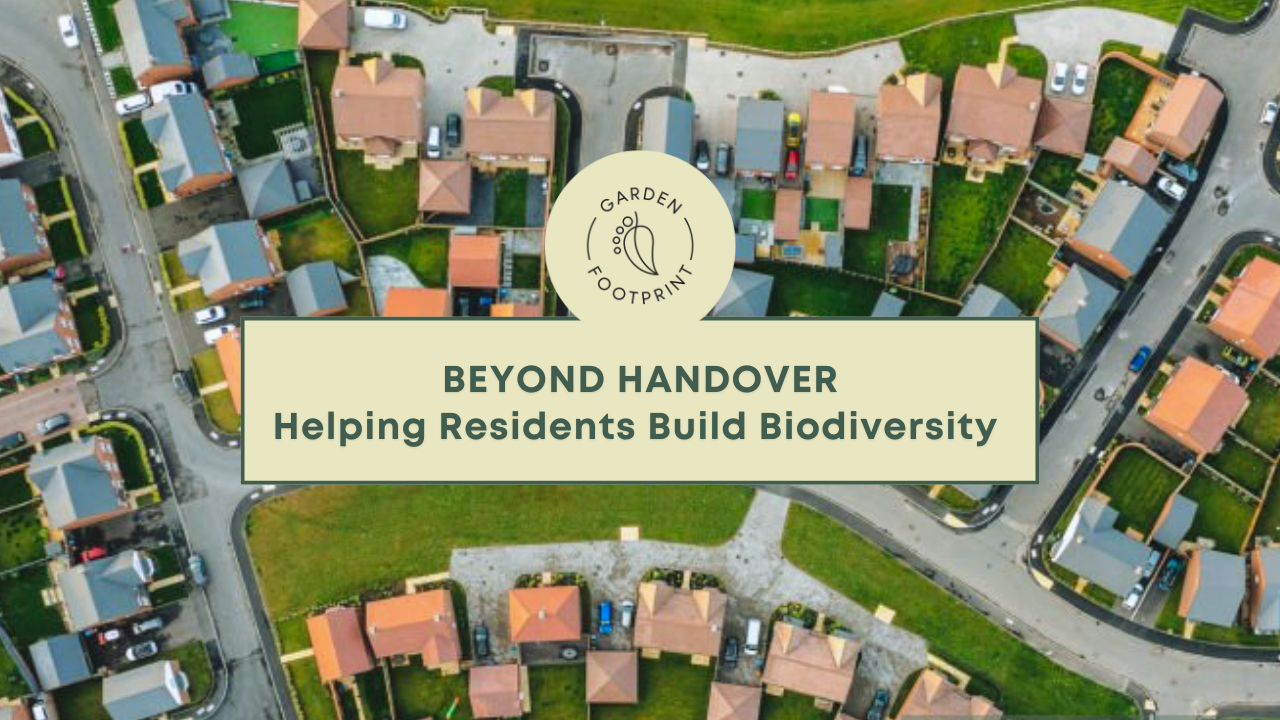
Beyond Handover: Helping Residents Build Biodiversity
Nov 02, 2025Most developers understand that Biodiversity Net Gain doesn’t end at practical completion. The real challenge begins once residents move in.
Even the best planting schemes can struggle if homeowners aren’t shown how to care for them. It’s not that people don’t care — NHBC research shows two-thirds of homeowners are willing to make changes to support nature — they simply need clarity and confidence.
That’s where developers can make the most lasting difference.
1. Simplify the message
Residents don’t need ecological jargon or complex management plans.
They need to know what to do this weekend — and why it matters.
Three small actions make the biggest difference:
-
Keep the soil covered. Groundcover plants or mulch protect and enrich the soil.
-
Plant for succession. Continuous flowering sustains pollinators and adds colour.
-
Add structure. Layers of herbs, shrubs and small trees create both visual appeal and wildlife shelter.
Simple, visible results help residents stay engaged and proud of their gardens.
2. Communicate biodiversity in human language
Phrases like “pollinator corridors” or “habitat complexity” are meaningless to most residents.
Reframing them into relatable cues — “Add three flowering plants near your patio” — gets better results.
Developers can embed these prompts into show-home signage, handover packs or welcome emails.
This kind of clarity supports long-term stewardship, improves resident satisfaction and reduces complaints about failing landscapes — all without adding to site workload.
3. Design for beauty and biodiversity
Wildlife-friendly doesn’t mean wild.
Modern biodiversity planting can be structured, stylish and easy to maintain: lavender, verbena, echinacea and evergreen shrubs for form and pollinators.
When biodiversity looks good, residents take pride in it — and that’s the foundation of longevity.
4. Strengthen credibility through stewardship
Planning frameworks such as Building with Nature, Homes England’s Quality of Life principles and NHBC Foundation research all highlight the value of long-term management and resident engagement in creating thriving, sustainable places.
While these references don’t specifically measure gardens, they reinforce a broader truth: biodiversity and community wellbeing are only maintained when residents feel supported to play their part.
Developers who invest in this education demonstrate commitment beyond compliance — an approach that increasingly defines leadership in sustainable housing.
5. Garden Footprint: a ready-made solution
You could create your own resident-engagement system — produce courses, resource packs and a helpdesk for horticultural queries — but it’s expensive, time-consuming and rarely sits neatly within developer expertise.
Garden Footprint exists to remove that barrier.
The turnkey programme gives developers a ready-to-use homeowner-education package that delivers instant, visible value with no extra workload in-house.
The package includes:
-
The Self-Sustaining Garden Course – practical, bite-sized lessons on soil, planting and water management.
-
Branded homeowner resources – the homeowner learning platform carries the developer’s logo and identity.
-
Supporting statements – for planning documents, public consultations and sustainability reports.
-
Customer-support access – a horticultural helpdesk that answers residents’ questions, saving developer aftercare teams time.
-
Press and marketing pack – ready-made content for LinkedIn, Instagram and newsletters to communicate environmental leadership with ease.
No other solution currently provides this level of turnkey homeowner engagement.
For developers, it delivers an immediate reputational gain — strengthening sustainability credentials the moment they adopt it, with almost no in-house resourcing required.
For residents, it provides support and reassurance from day one.
6. The bigger picture
Formal BNG and S106 requirements establish the regulatory baseline.
Garden Footprint operates alongside these frameworks — not as a measurable metric, but as a way to extend their spirit through meaningful resident education.
It’s a brand-building layer that demonstrates social value, ecological responsibility and long-term commitment — qualities that can’t be captured by a spreadsheet, but which shape how developments are remembered.
When residents understand how to care for their gardens, developers gain more than biodiversity — they gain loyalty, reputation and proof that their sustainability commitments extend beyond completion.
Beyond handover lies the opportunity to protect your investment, strengthen your brand, and deliver lasting value for both people and place.
Garden Footprint's aim is to make gardens low-maintenance, beautiful and edible. Check out our courses to start your journey!
Stay in the loop with Garden Footprint updates from Mike
Don't worry, your information will not be shared.
We hate spam. We will never sell your information, for any reason.

